The seax was a common blade in Saxon, Scandinavian and Frankish cultures of the Migration and Early Medieval period. Though there are regional variations, the seax always features a single-edged blade with a thick spine, sharply tapering to an abrupt point. The seax varies in length from the size of small utility knives to the length of a short sword.
Swords were fabulously expensive and required a skillful hand to produce – they were well out of the reach of the common man. Instead, he used the seax as both a utility knife and a fighting blade. The quality of seax varied as widely as the means of the men to purchase or create them – some are quite crude but a rare few had craftsmanship to rival master-crafted swords and had pattern-welded blades inlaid with metallic runes. These elaborate seax prove that the appeal of the seax could extend even to the chieftains and noblemen who may have in some cases preferred it over a sword.
Shorter seax almost invariably seem to be intended for utility, with a thick spine that could be used for hammering or could take a hammer to pound the blade through a material for a cleaner cut. The longer seax were intended solely for fighting. It is postulated in some of these tribes that all freemen carried the seax and displayed it prominently, horizontally at the front of their belt to denote status. In any case it is clear that its use was so widespread among the Saxons that their very name derives from the seax.
When used for fighting the thick spine ensured that a chop delivered with the larger fighting seax was ferociously effective, well-capable of severing a limb with force. The sharply tapered wedge-tip also made piercing wounds that could be made very wide with only a few inches penetration. It is sharply enough tapered that some thick-spined blades could have also broken links of mail asunder with a powerful, well-angled thrust. The long centuries of common, cross-cultural use of the seax attest to its utility and deadliness.
This seax has an unsharpened blade of high carbon steel. The guard is of carved black horn wedged between two plates of riveted steel. The pommel is of steel and the grip is of bone. Comes with a brown suede leather sheath with knotted leather belt loops.


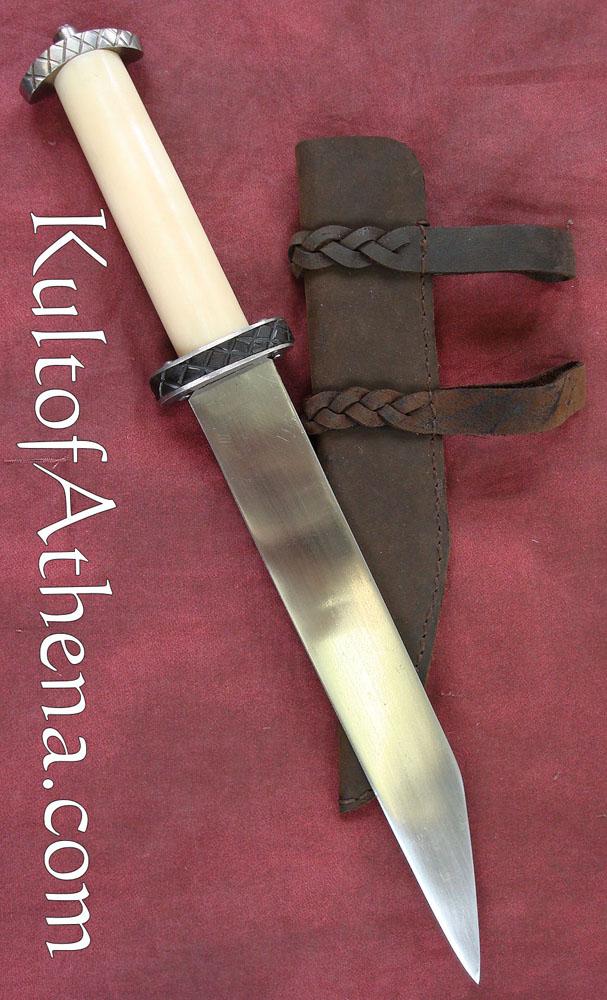
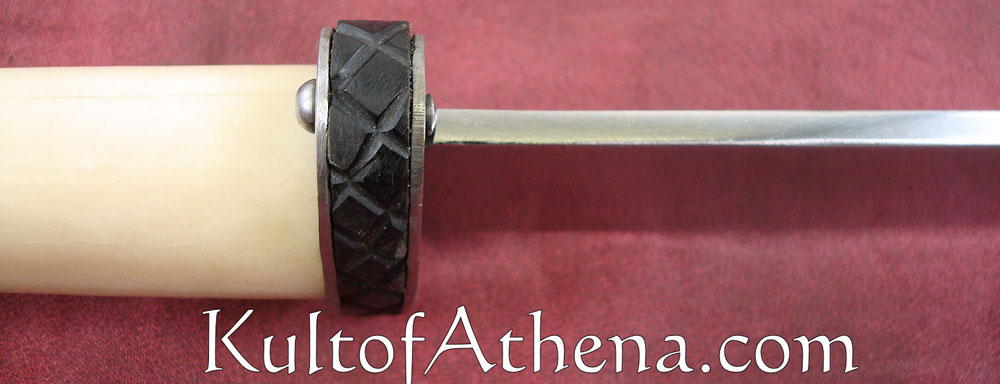
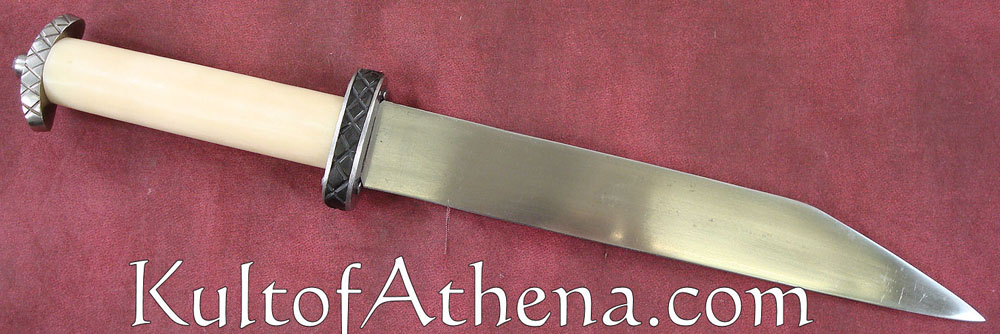
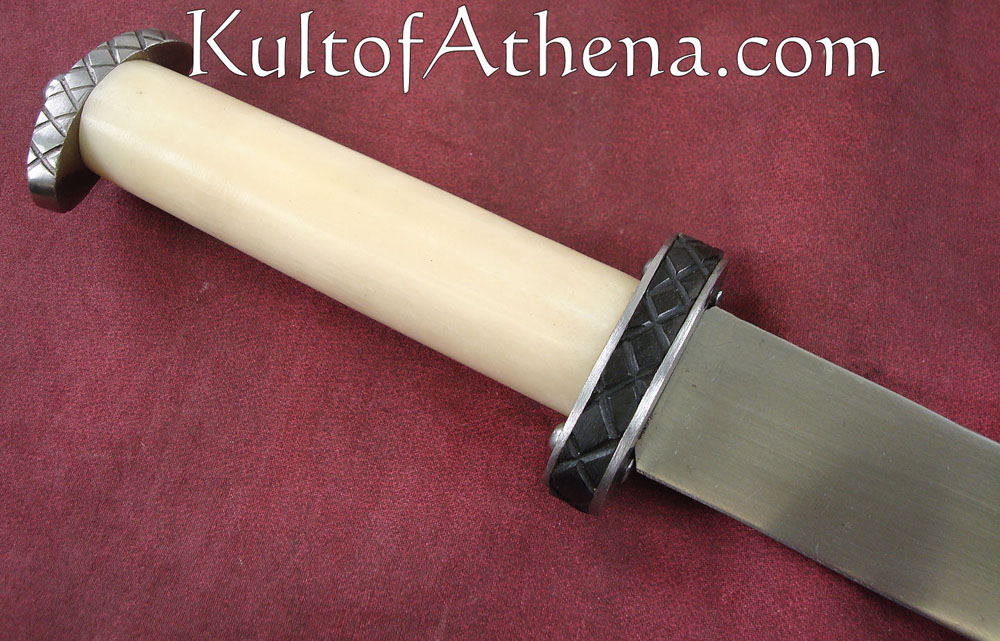
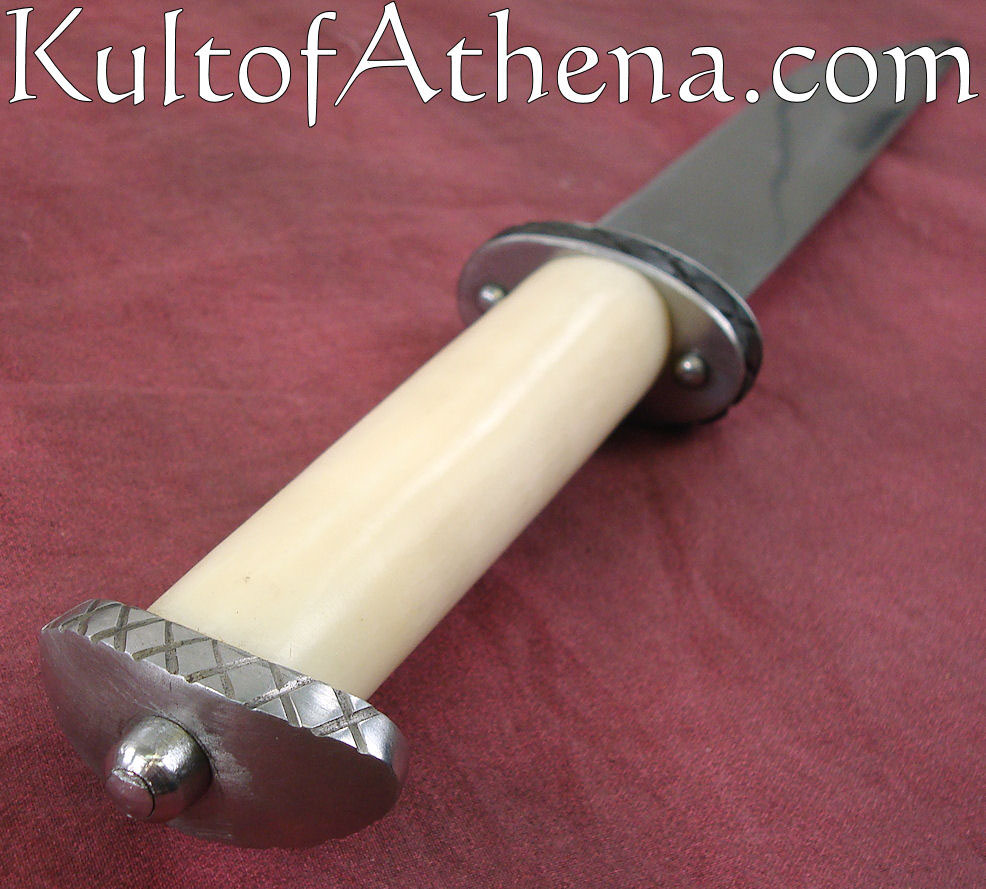
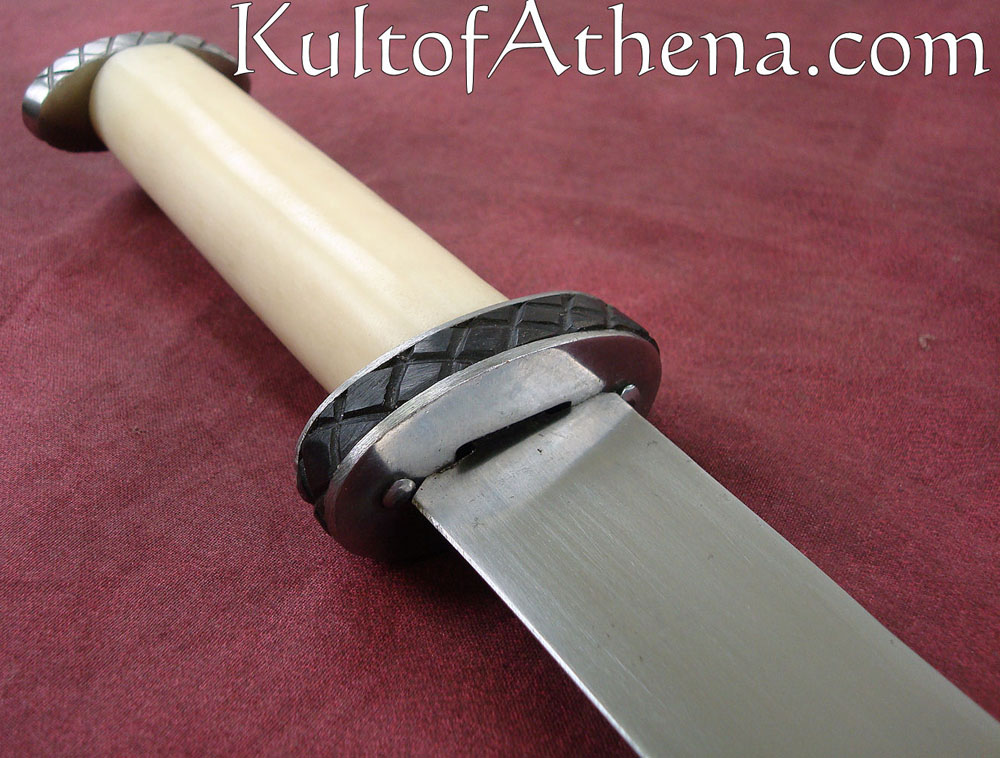
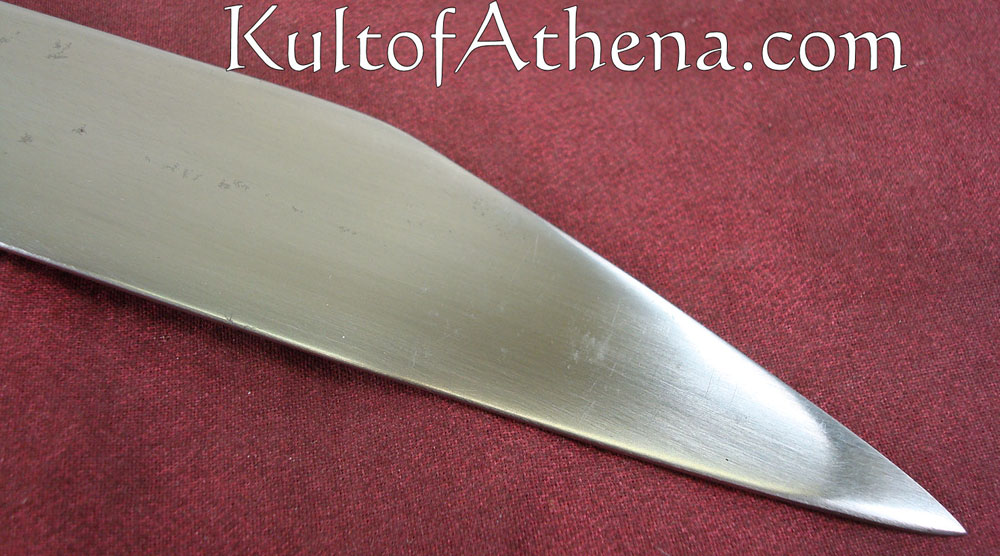
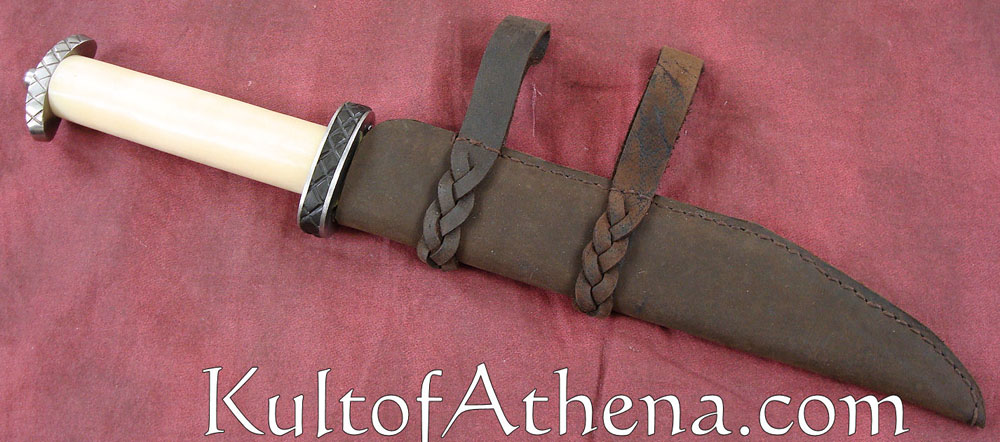

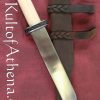
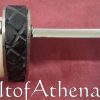
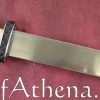
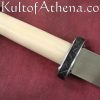
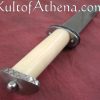
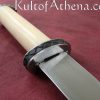
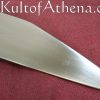
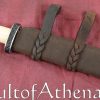

Craig E. –
Good useable seax with a little modification. I purchased one of these about a year ago. Mine looks just like the one pictured except the bone handle is somewhat curved rather than straight. It took a fair amount of careful work with a file to sharpen a good edge on it but the carbon steel blade actually seems to have been properly tempered and holds a decent edge. I use mine for a variety of utility purposes such as cutting tree limbs and meat and keep it as an emergency defensive weapon. Mine had gaps where the tang goes into the guard that I pushed epoxy putty down into. The handle is made from 2 sides of bone and after some heavy chopping use one day one side popped loose. Not a big deal, I just packed it full of epoxy putty and clamped it together, now it’s rock solid. The tang is fairly thick and forged from the same piece of steel as the blade, that was good to see. I really do like this seax and considering the reasonable price it was worth the work I needed to do to it. The sheath is OK, but care must be taken to keep a little pressure towards the spine side if you put a really sharp edge on yours or the leather can be cut easily. I may make my own sheath at some point…I am very happy with mine overall and with some modifications it’s a trusted tool and weapon that I’m proud to own.
GB –
Beautiful seax (as seen on TV!) I agree with the earlier review. This is a beautiful piece and seems well made. No edge at all, but I put one on with a grinding wheel in a few minutes.
On a side note, since I got this I was watching past episodes of Vikings, and this seax is used as a prop in the show. In season 4, episode 4 a berserker is sent to kill Bjorn Ironside and during the fight Bjorn stabs him in the arm with his seax. You can clearly see in some shots it is this exact model, with the distinctive horn guard and pommel. King Horik also had hands one to someone in an earlier episode.
D_B –
King Bjorn Ironside’s knife In ‘Vikings” it is clearly seen on Bjorn in the picture of him after becoming King of Kattegat
After reading the reviews here it is very much on my want list
D_B –
Update: I was a bit disappointed after receiving it, the fit of the handle to the blade leaves something to be desired , to the point that I got some polished stainless plate and rivets to redo it , I also made a new sheath to better match the one Bjorn wears .. the blade though is beautiful, and very sharp if you get the sharpened blade option